Finding STEM in a Field of Sunflowers
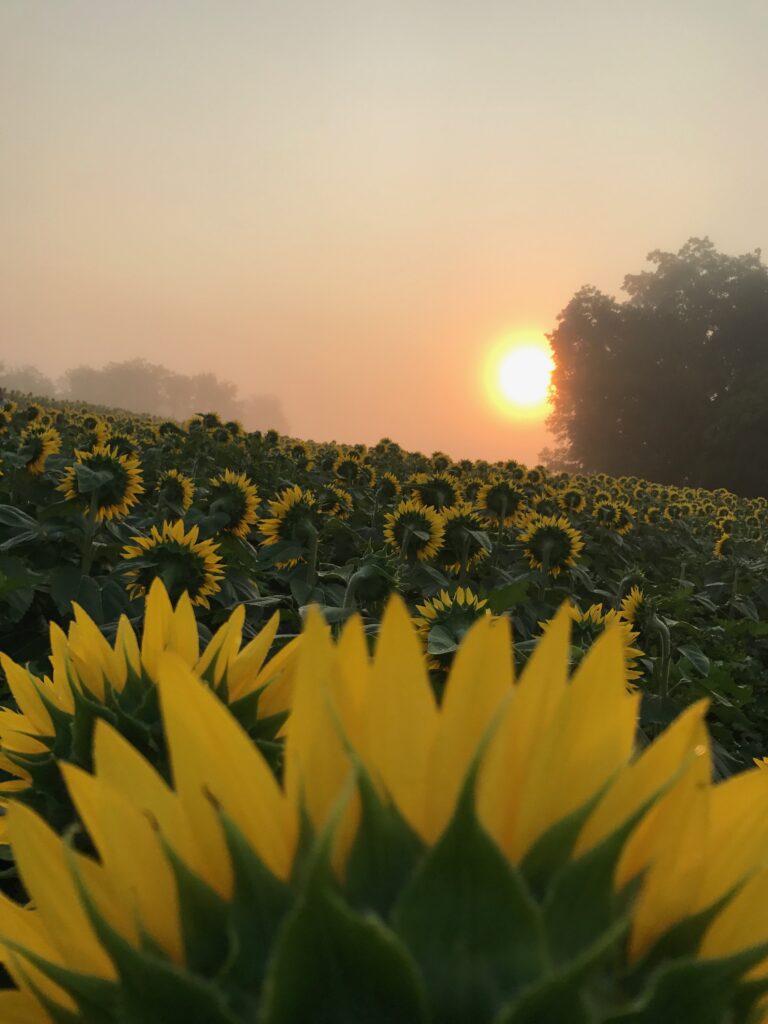
“When we drive to school in the morning, the sunflowers are facing one way and when we drive home after school they are facing the other way. That’s because they always want to see where I am going!” brags Melania to the other children on the bus.
“That’s not true,” grumbles Roberta, who is clearly not a sunny morning person.
“Yes, it really is true! Melania insists. “Ask my dad!”
I planned this morning field trip to a local sunflower farm to set the stage for some hands-on STEM learning. But it’s going to be a long Thursday if the kids are already arguing about the science behind the sunflowers we are about to see.
Hoping to lighten the mood on the bus and soothe the “hangry” Roberta, I reach into my bag and pull out some Sun Butter Energy Bars.
“Actually, what Melania is saying is partly true,” I explain as I hand out the energy bars. “As a sunflower grows, it turns its face to follow the sun from sunrise to sunset. So the sunflowers do face in one direction when Melania sees them in the morning and another direction when she sees them in the afternoon.”
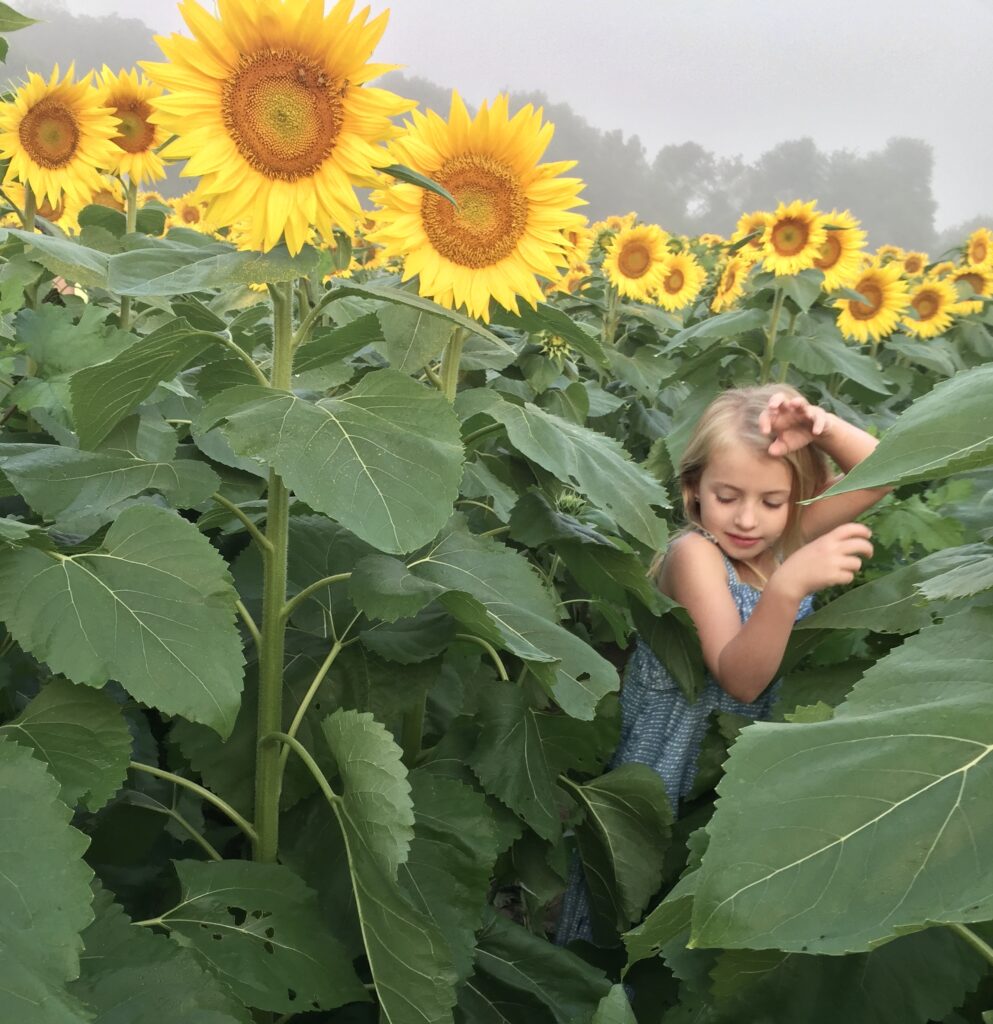
By the time we arrive at the sunflower farm, the energy bars have worked their magic. Roberta’s morning grumpiness has dissipated, everyone seems perkier, and the group is staring at the giant flowers in amazement.
“Look at how tall they are!” gasps Lauren. “They are even taller than the grownups!”
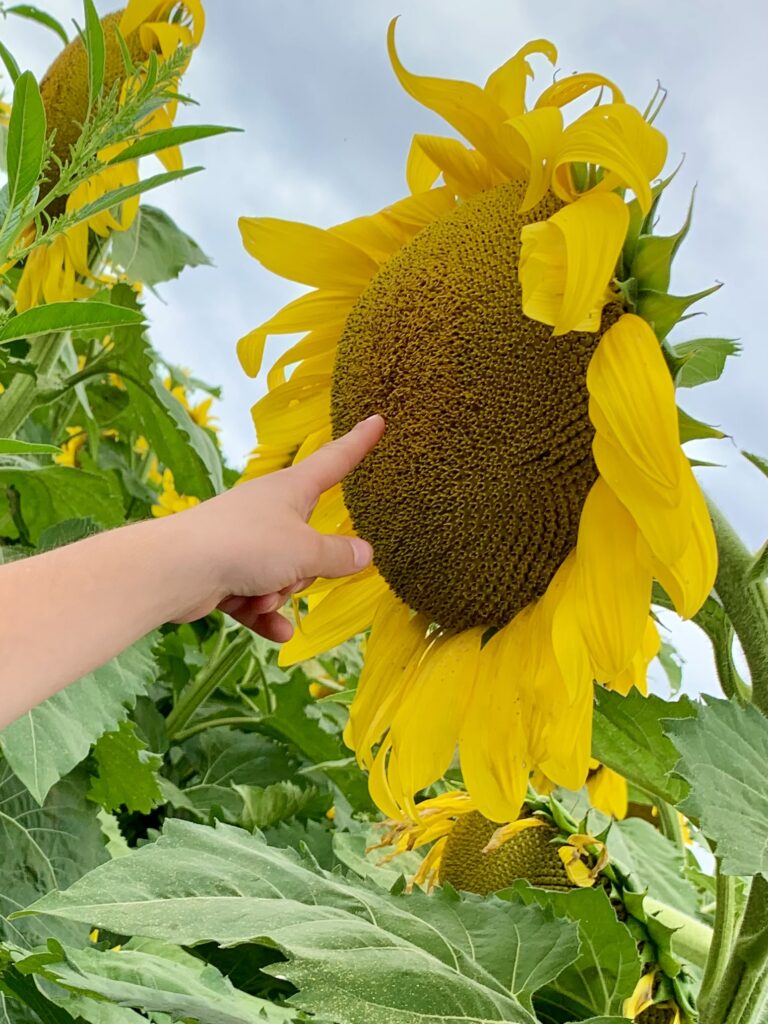
“Can I touch one?” asks Lauren. She reaches up and touches the center of the sunflower. “It’s bumpy,” she observes. “Wait, inside the middle, are those all little tiny sunflowers? Look! There are a million little tiny flowers inside the big flower head!”

Maybe not a million, but this is a great opportunity to introduce concepts such as quantity and estimating. In fact, one of the best places to strengthen math skills is in the garden!
Whether you bring flowers into your classroom, plant a school garden or take a field trip to a sunflower farm or a pumpkin patch, you can extend the learning by creating hands-on opportunities for children to practice their early math skills. When children observe, measure, compare and analyze their surroundings, it helps them make sense of their world.
“Look how big this one is!” says Jason, staring up at an enormous sunflower in awe.
I pull out a measuring tape so that we can measure how tall it is. We discuss how to measure an object. This leads to a conversation about concepts such as diameter and circumference. Of course, these concepts are too advanced for this group, but I like to “plant the seeds” for later vocabulary development.
As we wander through the sunflower farm, I prompt the children with conversation starters such as:
“I wonder how many seeds they planted.”
“I wonder how tall the sunflowers get.”
My goal? To inspire the children to find the math hidden in this field of sunflowers and start asking questions of their own.
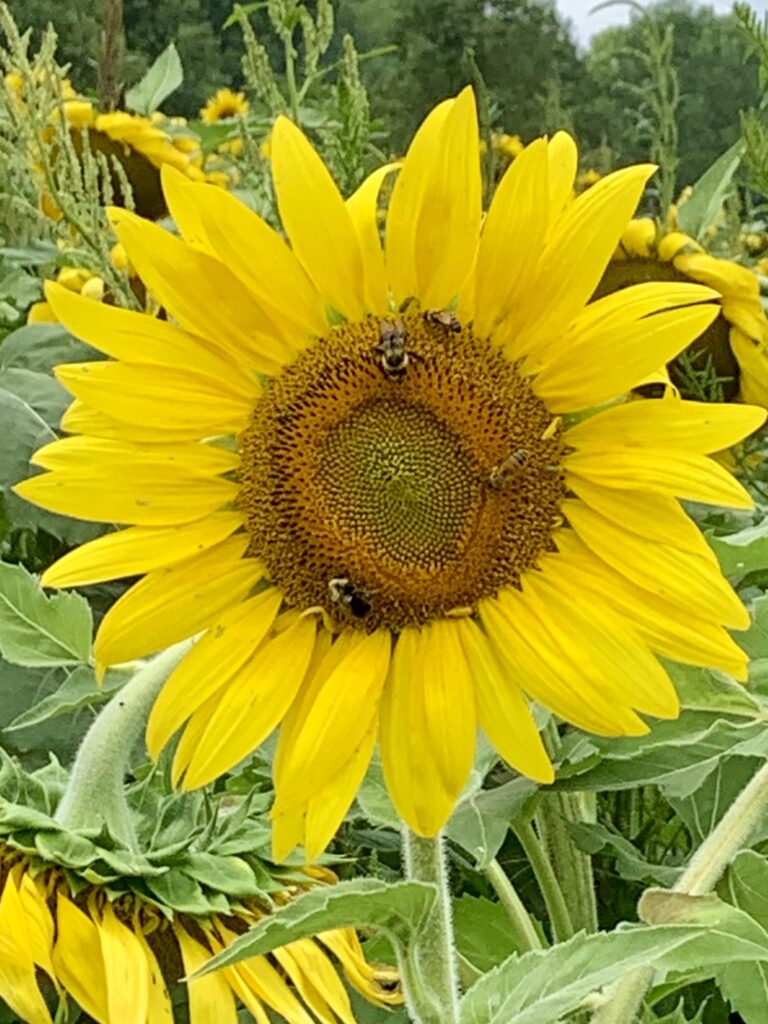
“I wonder how many times people get stung by all those bees hanging around the sunflowers?” muses Roberta.
“There are a lot of bees!” responds Melania, ever the Pollyanna to Roberta’s pessimist. “But they aren’t bothering us. They are so busy eating nectar that they don’t even know we are here.”
“Look, this one has four bees on it!” observes Jason. “Look, Roberta! Let’s see if we can find more!”
When children are learning to count, they love counting anything, even bees! By teaching math in the garden, you can show children how we use math in our daily lives.
Soon the children are comparing the sunflowers in the field, using math vocabulary words such as big, bigger and biggest, small, smaller and smallest, and tallest and widest.
When you return to the classroom, you can build on this lesson by encouraging the children to arrange flowers, fruits or vegetables in order from smallest to biggest or biggest to smallest.
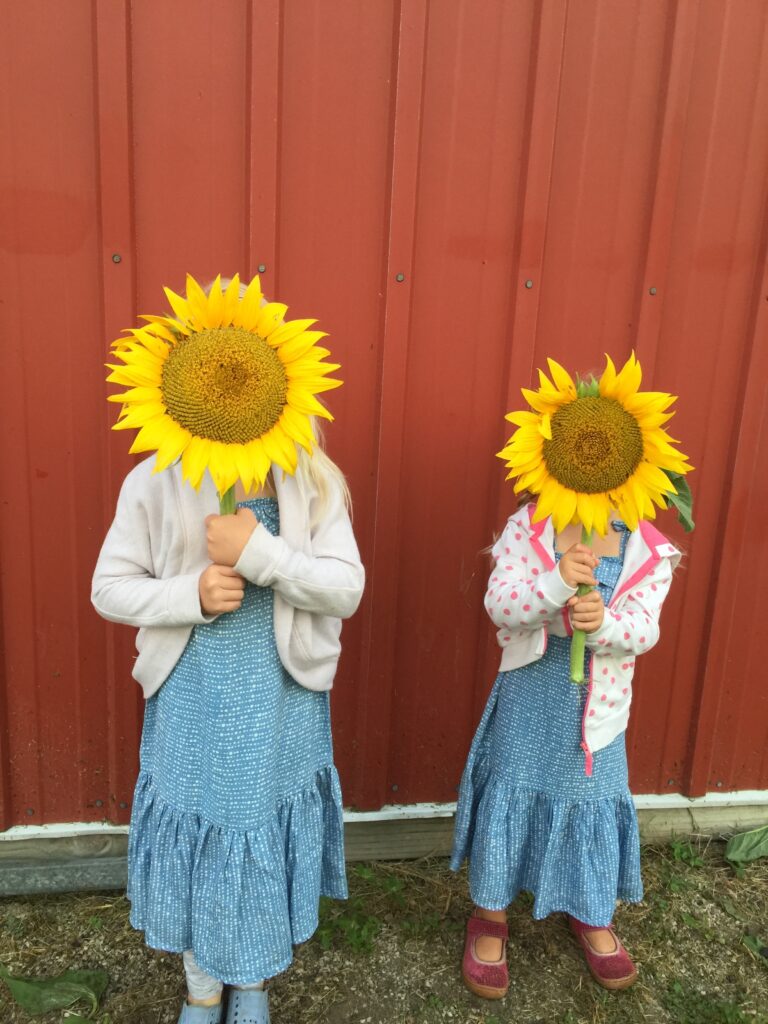
Our morning at the farm has inspired a morning of math-filled conversations. From the shapes that make up the sunflower, to counting bees to measuring stalks, math concepts come to life when we take the time to look for math in our everyday encounters.
Ready to find more math in the garden? Check out these Early Math Counts lesson plans: The Tiny Seed and Flower Fun.
Great lesson. You can do so much with size, color, plant ,maturity comparrisons/
How does sunflowers and flowers have this much of an effect on children education?
Hi Jalisa,
It truly seems to easy, doesn’t it? Children learn through play and experiences. When we introduce measuring and counting and subtilizing in a field of flowers, it plants the foundation for deeper learning when their brains are ready later in their academic life. Outdoor adventures slows down the pace so a child’s focus and concentration are intensified. Preschool children often learn best in a hands-on experience rather than sitting with a paper and pencil in a desk.
I love this lesson, so much math, and so many different ways to do it. My class has a garden every year I think we should add sunflowers.
i also love this lesson. children do love to count “things” but by incorporating the world around us they get math and other concepts as well. science, language, nature…all the important things and that they all include math!
I like the idea of guessing how many small flower disks are in the center of the sunflower. Amazing!
Bringing a sunflower back to the classroom to measure and estimate height/number of seeds is an added meaningful learning extension for students.
Another great way to incorporate nature into a lesson!